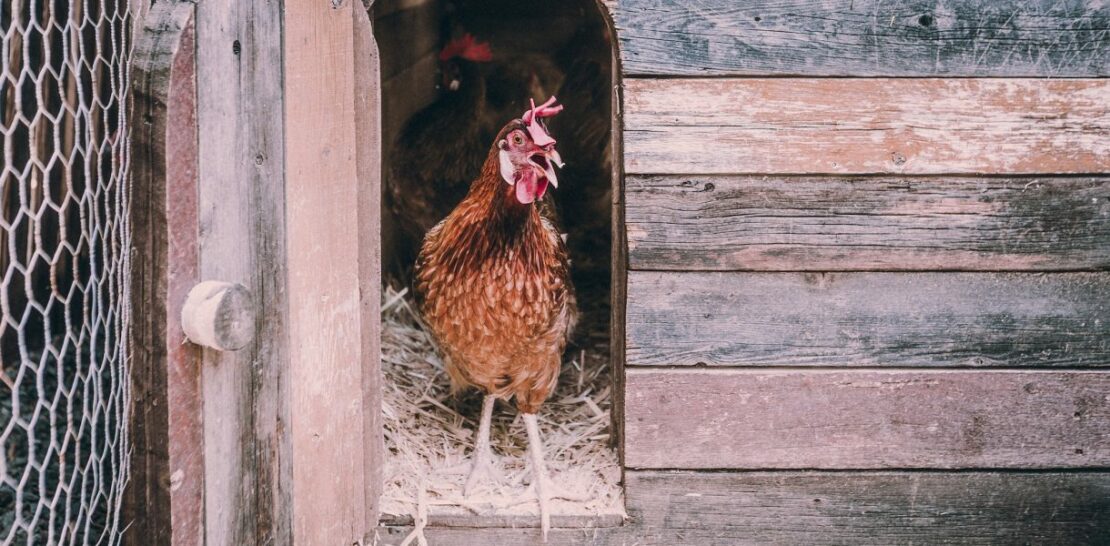Welcome to the ultimate guide to creating a hen’s paradise – a sanctuary where your beloved hens can thrive, flourish, and produce the best eggs possible!
In this comprehensive article, you’ll discover 10 breathtaking tips that will help you build the perfect henhouse for your feathered friends.
These expert-approved strategies and advice are designed to ensure that your hens are happy, healthy, and productive.
So, if you’re ready to transform your backyard henhouse into a paradise for your hens, let’s dive in!
1. Prioritizing Space and Comfort
One of the most important factors to consider when designing your hen’s paradise is space and comfort. Ensuring that your hens have ample room to move, stretch their wings, and engage in natural behaviors is crucial for their overall well-being.
- Indoor Space: Provide a minimum of 2-4 square feet per hen inside the henhouse, with additional space for nesting boxes and roosting bars. This will allow your hens to comfortably move around without feeling cramped or stressed.
- Outdoor Space: Allocate at least 10 square feet per hen in the outdoor run area, which should be enclosed with a secure fence to protect your hens from predators. This encourages exercise, foraging, and socialization among the flock.
- Nesting Boxes: Ensure each hen has access to a cozy and private nesting box, measuring at least 12″x12″x12″, to lay their eggs. Providing one nesting box for every 4-5 hens is recommended.
- Roosting Bars: Supply roosting bars or perches at various heights, allowing at least 8-12 inches of space per hen. This gives them a comfortable place to perch and sleep at night.
2. Lighting and Ventilation: The Keys to a Healthy Environment
Creating a well-lit and well-ventilated henhouse is essential for your hens’ health and happiness, as it helps to prevent respiratory issues, mold growth, and other health risks associated with poor air quality.
- Windows and Natural Light: Install windows in your henhouse to provide plenty of natural light during the day. This will not only help maintain a comfortable temperature, but it will also encourage egg production and keep your hens’ internal clocks regulated.
- Artificial Lighting: In addition to natural light, you may also need to provide supplemental artificial lighting during the shorter winter months to maintain consistent egg production. Aim for a total of 14-16 hours of light per day, using a timer to control the artificial light source.
- Ventilation: Proper ventilation is crucial for maintaining good air quality and preventing the buildup of harmful ammonia and moisture in the henhouse. Install vents near the roof and ensure that there is adequate airflow while still protecting your hens from drafts and cold temperatures.
3. Henhouse Flooring: Finding the Perfect Material
When it comes to selecting the ideal flooring material for your henhouse, it’s essential to consider durability, cleanliness, and the comfort of your hens. Here are three popular flooring options and their benefits:
Concrete: A durable and low-maintenance option, concrete flooring is easy to clean and disinfect, making it a top choice for maintaining a sanitary environment. However, it can be cold and hard for your hens’ feet, so be sure to provide plenty of soft bedding to keep them comfortable.
Wood: A traditional and attractive choice, wood flooring is warmer and more comfortable for your hens to walk on. However, it can be more challenging to clean and may require regular treatment to prevent rot and pests.
Plastic: Lightweight and easy to clean, plastic flooring is a popular choice for its durability and low maintenance. Be sure to choose a textured or non-slip surface to prevent injuries and accidents in the henhouse.
4. Predator-Proofing Your Henhouse
Keeping your hens safe from predators is a top priority when designing their paradise. Implement the following strategies to ensure their safety:
- Secure Doors and Windows: Install sturdy doors and windows with secure latches and locks to prevent predators from entering the henhouse. Consider using hardware cloth instead of traditional wire mesh for added protection.
- Fenced Outdoor Run: Enclose the outdoor run area with a secure fence, burying the base at least 12 inches underground to deter digging predators. Additionally, consider adding a roof or netting to protect against aerial threats such as hawks or owls.
- Guard Animals: Introduce a guardian animal, such as a dog, donkey, or llama, to help protect your flock from potential predators. Be sure to choose an animal that is compatible with your hens and properly trained to guard them.
- Regular Inspections: Regularly inspect your henhouse and surrounding area for signs of potential predators, such as tracks, droppings, or damage to the structure. Address any issues promptly to maintain a secure environment for your hens.
5. Providing Enrichment and Stimulation for Your Hens
Just like any other animal, hens require mental and physical stimulation to maintain their well-being. Incorporate the following enrichment ideas into your henhouse design to keep your flock engaged and entertained:
- Perching Opportunities: Offer a variety of perching options at different heights and materials for your hens to explore and exercise their natural perching instincts.
- Dust Bathing Areas: Provide a designated dust bathing area, filled with sand or fine dirt, that will allow your hens to indulge in this essential grooming behavior.
- Foraging and Pecking: Scatter scratch grains, vegetables, or other treats throughout the outdoor run to encourage natural foraging and pecking behaviors, while preventing boredom and aggression within the flock.
- Interactive Toys: Introduce various interactive toys, such as hanging treat balls or pecking blocks, to provide mental stimulation and entertainment for your hens.
6. Maintaining a Clean and Sanitary Environment
Keeping your henhouse clean and sanitary is crucial for the health and happiness of your flock. Follow these essential cleaning tips to maintain a hygienic environment:
- Daily Cleaning: Perform daily spot-cleaning tasks, such as checking for and removing any broken eggs, cleaning up spilled food, and refreshing waterers.
- Weekly Cleaning: On a weekly basis, remove soiled bedding, scrub and disinfect the nesting boxes, and clean the roosting bars.
- Deep Cleaning: Conduct a thorough deep cleaning of the entire henhouse every 3-4 months. This includes removing all bedding, cleaning and disinfecting all surfaces, and allowing the henhouse to air out before replacing the bedding and reintroducing your hens.
- Pest Control: Regularly inspect and treat your henhouse for pests, such as mites, lice, or rodents, to maintain a healthy and safe environment for your flock.
7. Providing Proper Nutrition for Optimal Health
A balanced and nutritious diet is essential for your hens’ health, happiness, and egg production. Ensure optimal nutrition by following these guidelines:
- High-Quality Feed: Provide a high-quality, commercially available layer feed, formulated specifically for laying hens, as the primary source of nutrition. This will ensure they receive the necessary vitamins, minerals, and protein to support their health and egg production.
- Supplemental Nutrition: Offer additional sources of nutrition, such as vegetables, fruits, and scratch grains, to supplement their diet and provide variety. However, these should not make up more than 10% of their overall diet.
- Calcium Supplements: Supply a separate source of calcium, such as crushed oyster shells or eggshells, to support strong eggshell production and overall bone health.
- Fresh Water: Provide a constant supply of fresh, clean water for your hens, as dehydration can lead to serious health issues and decreased egg production.
8. Monitoring and Managing Flock Health
Regularly monitoring your hens’ health and addressing any potential issues is an essential aspect of maintaining a hen’s paradise. Implement these flock health management practices:
- Regular Observations: Observe your flock daily for any signs of illness or injury, such as lethargy, loss of appetite, or changes in egg production. Early detection and intervention are crucial for successful treatment and recovery.
- Vaccinations and Preventative Care: Consult with a local veterinarian to develop a vaccination and preventative care schedule appropriate for your hens, as certain diseases and parasites can have a significant impact on their health and egg production.
- Quarantine New Birds: When introducing new birds to your flock, quarantine them for at least two weeks to ensure they are healthy and free of any diseases before integrating them with your existing hens.
- Handling and Stress Reduction: Minimize handling and unnecessary disturbances, as stress can negatively impact your hens’ health and egg production. When handling is necessary, do so calmly and gently to reduce stress.
9. Designing an Attractive and Functional Henhouse
While practicality and safety are essential, an attractive and well-designed henhouse can also contribute to your flock’s overall happiness and well-being. Consider these design elements when creating your hen’s paradise:
- Color and Aesthetics: Choose visually appealing colors and designs for both the interior and exterior of your henhouse, creating a welcoming environment for your hens and a beautiful addition to your backyard.
- Organization and Storage: Incorporate functional storage solutions and organization systems, such as shelves or bins, to store feed, bedding, and other henkeeping supplies, keeping the henhouse tidy and efficient.
- Accessibility: Design your henhouse with easy access points for cleaning, feeding, and egg collection, making routine maintenance tasks more manageable and efficient.
- Upcycling and Sustainability: Consider using upcycled or repurposed materials when building your henhouse, reducing waste and contributing to a more sustainable and environmentally friendly henkeeping experience.
10. Establishing a Supportive Henkeeping Community
A supportive and knowledgeable community is invaluable when it comes to creating and maintaining a hen’s paradise. Engage with fellow henkeepers and experts through the following avenues:
- Local Henkeeping Groups: Join local henkeeping groups or clubs, where you can share experiences, knowledge, and resources with fellow hen enthusiasts in your area.
- Online Forums and Social Media: Participate in online henkeeping forums, such as BackYard Chickens, or follow social media groups and pages dedicated to henkeeping. These platforms provide a wealth of information, advice, and support from experienced henkeepers around the world.
- Workshops and Events: Attend workshops, seminars, or events focused on henkeeping and related topics, providing opportunities for hands-on learning and networking with other henkeepers and industry professionals.
- Collaboration and Mentorship: Seek out experienced henkeepers who can offer mentorship and guidance, either locally or online, to support your journey in creating a hen’s paradise for your flock.
In conclusion, creating a hen’s paradise requires careful planning, dedication, and a commitment to the well-being of your flock. By following the 10 breathtaking tips outlined in this article, you will be well on your way to designing the perfect henhouse that caters to your hens’ needs, promotes their health and happiness, and results in a thriving and productive flock. Embrace the journey and enjoy the many rewards that come with providing a loving and nurturing environment for your feathered friends.




